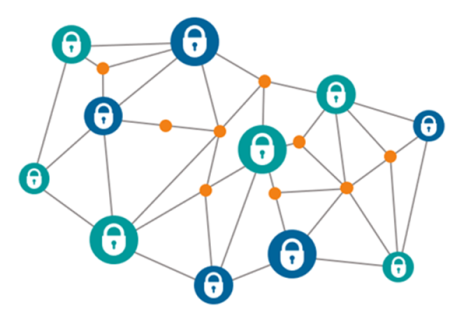Most discussions around digital assets begin (and often end) with bitcoin. But Callan believes the underlying and nascent technology behind bitcoin is what is critical to understand, as it provides several potential applications for the investment industry in ways that can enhance current operational infrastructure and processes. Thus this blog post and the accompanying white paper (accessible at the link above) do not explore the investment-related questions around bitcoin, other cryptocurrencies, or any other digital asset. Rather, they assess the potential changes to existing industry processes, such as clearing and settlement, reconciliation of data (including custody, accounting, investment, performance, and governance books of record), and potential impacts to the investment landscape should all asset classes and asset types exist as digital assets on a blockchain.
First, let’s start with a very brief overview. A digital asset is any asset whose value, rights, and ownership are represented and tracked on a “distributed ledger” or “blockchain.” A blockchain is a distributed and decentralized ledger of transactions across a peer-to-peer network. Embedded in the definition of blockchain is the term distributed ledger, which is a database that is stored across multiple locations.
Digital assets encompass those that are digitally native, meaning assets that were originally created on a blockchain (i.e., cryptocurrencies, non-fungible tokens), as well as traditional assets (i.e., shares of stocks, bonds, rights, options, and limited partnerships) that have been tokenized to exist on a blockchain. Under the umbrella term of digital assets are some key concepts beyond blockchains and distributed ledgers: cryptography, public and private keys, validation protocols, smart contracts, and tokenization. For definitions of these key concepts and their full context, please refer to the accompanying white paper.
Next, some history. The importance and criticality of data to the institutional investment industry has increased the need for improved analytical tools. With the growing importance of data, in turn, technology that allows platforms and data repositories to share that data via application programming interfaces, or APIs, has become essential. Other innovations such as machine learning and artificial intelligence have been a part of the technology journey of the investment industry over the last several decades. And now digital assets have become a part of these discussions.

The root of digital assets can be traced to the release of the seminal paper “Bitcoin: A Peer-to-Peer Electronic Cash System” by Satoshi Nakamoto. This paper not only introduced the concept of a digital currency, but it more importantly explained how the melding of existing concepts such as cryptography, encryption, and distributed ledgers could create a technology and platform that allowed for a network or ecosystem that was entirely decentralized and “trustless” (i.e., intermediaries are not necessary in a peer-to-peer environment) and that is known as a blockchain, where the cryptocurrency, bitcoin, could exist.
It was no coincidence that this paper was released in October 2008 during the Global Financial Crisis given that the philosophical underpinnings of bitcoin were to create a currency that eliminated the reliance on central banks, governing bodies, and financial intermediaries that traditional currencies like the U.S. dollar face, and instead create a global digital currency that utilized blockchain technology.
Blockchains and distributed ledger technology as well as other key concepts mentioned earlier are the pieces of technology that are helping the investment industry evolve. The industry today relies on the flow of information among private, centralized ledgers or databases. Whether it be trade information or accounting data, there is a linear validation process that is predicated on steps being completed in order to proceed. This linear process is the reason why reconciliation is necessary, given the potential for duplication of data or error due to human involvement. In a blockchain environment, distributed ledgers would provide a single source of truth, with each party enhancing data in real-time as the transaction passes through the value chain.
For example, since institutional investors, investment managers, recordkeepers, and custodians would all store the same ledger as nodes in the ecosystem, an on-chain environment would eliminate the multiple points of reconciliation that are necessary today. This would in turn improve the time it takes to audit and close accounting books, calculate performance, and complete financials for reporting purposes. Another potential impact is the shift to “atomic settlement,” referring to instantaneous trade settlement. Atomic settlement paired with a single source of truth for data could have far-reaching benefits for the industry by improving the liquidity, efficiency, and accessibility of the capital markets.
Callan is in constant communication with industry participants to understand what the future of digital assets custody looks like; how blockchain, smart contracts, and tokenization are changing the operational functionality of securities finance; and how the roles of custodians, investment managers, brokers, transition managers, and others may change as digital assets reshape the institutional investment industry.
Disclosures
The Callan Institute (the “Institute”) is, and will be, the sole owner and copyright holder of all material prepared or developed by the Institute. No party has the right to reproduce, revise, resell, disseminate externally, disseminate to any affiliate firms, or post on internal websites any part of any material prepared or developed by the Institute, without the Institute’s permission. Institute clients only have the right to utilize such material internally in their business.

